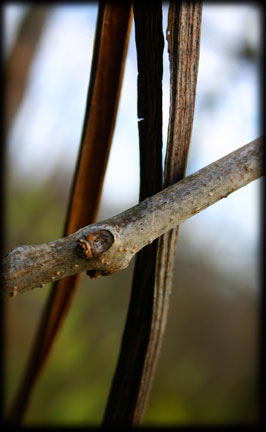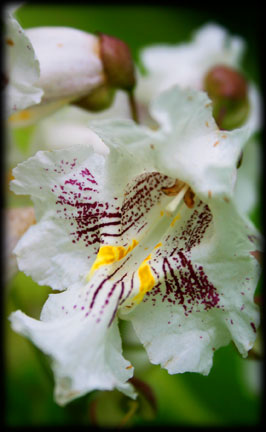Catalpa
by Joshua Heston
There’s something stirring about a stand of catalpa in November, gaunt against the cold sky.
They are evocative, picturesque trees — with a tendency to grow to extraordinary size.
Have you ever noticed they also tend to grow near old railroads?
Or in railroad towns?
There’s a reason for that. Both species of catalpa (northern and southern) are native to North America. Both — initially — shared a comparatively small range.
That was back in the old days.
Catalpa — which is named for the Native American tribe of Catawba or Catalpa — was a tree that exhibited two interesting capacities to the railroad companies.
It grows quickly to a great size and the wood is resistant to decay.
Thousands of Catalpa speciosa were planted alongside the railroads. The stands would grow quickly, making for a ready supply of ties.
The plan worked admirably well.
And this species, with its long, tropical-looking seedpods and trumpet-like flowers, was spread across the eastern and middle portions of America.
The tree came to define an era — an era giddy and drunk with its own capabilities, when industry looked to cheerfully run roughshod over all the world.
An era that would, all too soon, be replaced.
May 13, 2009
Northern Catalpa (Catalpa speciosa)
Size: 40 to 50 feet tall; leaves 6 to 12 inches long. What to look for: leaves heart shaped, dark green above, hairy below; flowers showy, white with purple and yellow specks; fruits cigar-shaped, green to brown. Habitat: bottomlands.
— page 322, Wernett, Susan J., et al. North American Wildlife. The Reader's Digest Association, Inc., 1986.

Plate 1.

Plate 2.

Plate 3.



